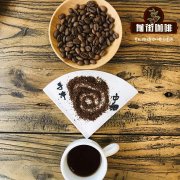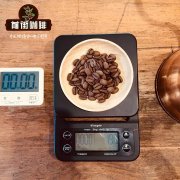Coffee raw bean treatment classification, different treatment of coffee is not very different?

For information, please follow the coffee workshop (Wechat official account cafe_style)
When the coffee fruit is ripe and picked from the tree, it will be processed into dried coffee beans, so there are basically three kinds of coffee fruit according to the method of handling the coffee fruit.
-- drying / solarization / natural treatment (Dry process----natural method)
-- Wet treatment / water washing (Wet process----washed coffee)
-Honey treatment (Honey process)
Insolation: insolation, showing a strong aroma of wine
This is the most primitive, simple and oldest treatment of coffee. According to relevant literature, Arabs began to use sun treatment to treat the fruits of coffee as early as 1000 years ago in the 11th century.
Treatment process: first pour the coffee beans into a large tank, the underdeveloped inferior beans will float on the surface, pick up the ripe and full fruits that sink to the bottom of the water, lay them out in the sun, and often turn them over to pick out defects. When the water content in the coffee beans is reduced to 10%-14%, the peel pectin can be knocked off with a sheller, and the whole solarization method is complete.
Disadvantages: the sun method depends entirely on the weather, and the dryness of coffee fruit is difficult to control. If the sun is not clean, it is easy to mix with impurities. In the process of the sun, the pulp of the coffee fruit has not been removed, so it is often moldy and rotten. Therefore, in the view of many people, the quality of sun-exposed coffee beans is not controllable and the level is not too high.
Advantages: except for the first step of using water to filter out inferior beans, the other steps no longer need any water, and can be used repeatedly. In areas where water resources are not abundant, this method is simply awesome.
And because sun-dried beans have irreplaceable special flavor, some excellent farms begin to take sun-dried beans seriously, such as putting them on shelves to prevent pollution and fine selection, so today we can see a lot of high-quality sun-dried coffee beans.
Flavor: although the sun-dried beans are uneven in appearance and different in color, because the coffee beans ripen naturally inside the fruit and are not disturbed by the external environment, the sun-cured coffee beans have a stronger flavor, fermented like wine and sweet.
Washing method: wash out a clean sour smell
Because of the shortcomings of the solarization method, the Dutch invented the washing method in the mid-18th century, which was widely favored. The biggest difference from the sun method is that it uses fermentation to remove the skin.
Treatment process: as in the first step of the solarization method, the inferior beans are removed first, and then the peel and pulp of the coffee fruit are knocked off with pulping machine (pulp planer). Throw it into the sink to ferment for 16-36 hours, and the fermentation bacteria dissolve the pectin. In order to remove the residue of fermentation bacteria and impurities, the coffee beans are washed again, and then the coffee fruit is dried by machine to reduce the moisture content to 10% Murray 14%. Finally, the use of shelling machine to remove the silver skin on the coffee beans can be completed.
Disadvantages: the washing method, as its name implies, mostly requires water, but this method is not likely to be adopted in some countries that lack water resources. The process of washing is also relatively cumbersome and the cost is much higher than that of tanning.
Advantages: after layers of screening and cleaning, the appearance and taste will be cleaner and more uniform. And because the flesh is removed in the first place, you don't have to worry about mildew as much as the sun.
Flavor: the semi-washing method has the least influence on the quality, and the sour taste of coffee is lower than that of washed beans and higher than that of sun-washed beans; the sweet taste is lower than that of honey treatment, but the cleanliness is better than that of honey treatment, and the flavor is between honey treatment and water washing.
Semi-washing method: remove all the pectin from the peel.
Because the water washing method requires too much water, the semi-washing method was born out of thin air. It is a mixture of sun exposure and water washing, and it is also a compromise between the two.
Washed beans usually have bright and clean acidity because they ferment acid in the fermentation tank.
Treatment process: first, it is the same as the above two treatments, first remove the shoddy beans; then pour the coffee fruit into the pulping machine (pulp planer) to remove the skin and pulp.
In order to reduce water consumption, semi-washing uses demucilager (pectin scraper) to remove pectin, and finally the coffee fruit is dried or exposed to outdoor exposure.
Reduce the water content of the coffee fruit to 10% Murray 14%, and then use a sheller to remove the silver skin sticking to the coffee beans.
Disadvantages: although it is a mixture of washing and tanning, its process is as tedious as washing.
Advantages: it has the cleanliness of washing method, and it doesn't need to consume a lot of water.
Flavor: the semi-washing method has the least influence on the quality, and the sour taste of coffee is lower than that of washed beans and higher than that of sun-washed beans; the sweet taste is lower than that of honey treatment, but the cleanliness is better than that of honey treatment, and the flavor is between honey treatment and water washing.
Important Notice :
前街咖啡 FrontStreet Coffee has moved to new addredd:
FrontStreet Coffee Address: 315,Donghua East Road,GuangZhou
Tel:020 38364473
- Prev

What are the characteristics and principles of the French kettle? which is the better story of the mocha pot, the mocha kettle or the siphon kettle?
For information, please pay attention to the history of the coffee workshop (official Wechat account cafe_style), also known as French filter pot, tea maker, French Press French filter pot: a simple brewing appliance made of heat-resistant glass bottle (or transparent plastic) and metal filter with pressure rod, which originated in France around 1850. At first, it was mostly used to brew black tea, so there were also some people
- Next

Coffee beans red wine treatment is to use red wine to deal with coffee beans?
Professional coffee knowledge exchange more coffee bean information please follow the coffee workshop (Wechat official account cafe_style) 2015 WBC contestant Sasa brought the world a similar red wine brewing process of Colombian coffee beans, in addition to the novel taste of beans, was used to deal with beans of the "red wine treatment" also let the editor and many coffee lovers, good
Related
- What is the meaning of lactic acid fermentation with coffee bean treatment?
- How to judge the state of foam by sound?
- How does the latte pull out the unicorn pattern? Come to get for a little trick to improve the flower pull!
- Will flower pulling affect the taste of the latte?
- Do you know the history of coffee?
- The difference between honey treatment and sun washing what is raisin honey treatment?
- What kind of milk can a novice use to make coffee foam to keep the foam longer? The correct method and skills of milking tutorial sharing
- Why do washed coffee beans taste sour? Flavor characteristics of washed Coffee
- Introduction to the skill of how to practice the size and height of water injection around the circle of hand-brewed coffee
- How do beginners practice coffee flower drawing from scratch?

